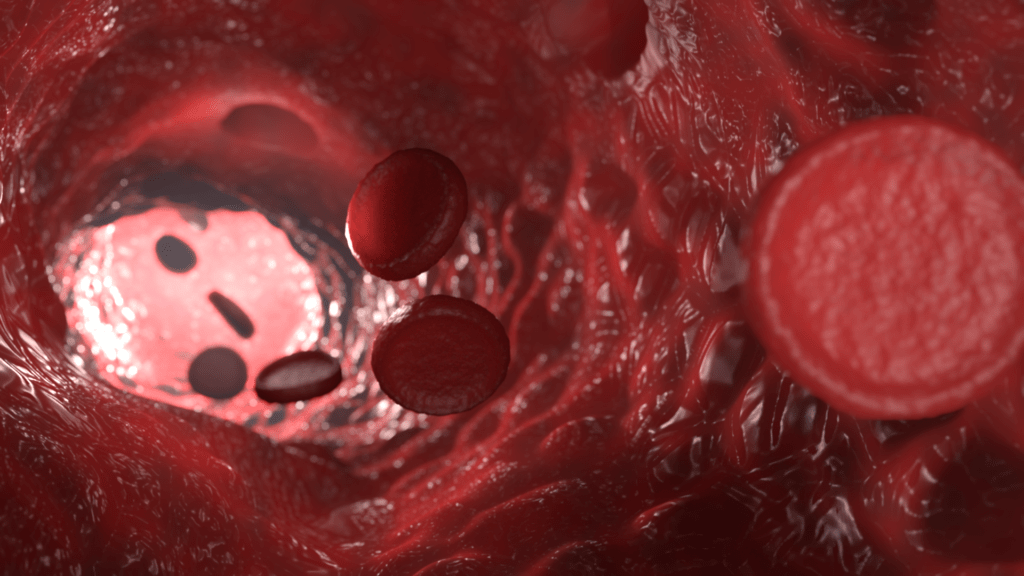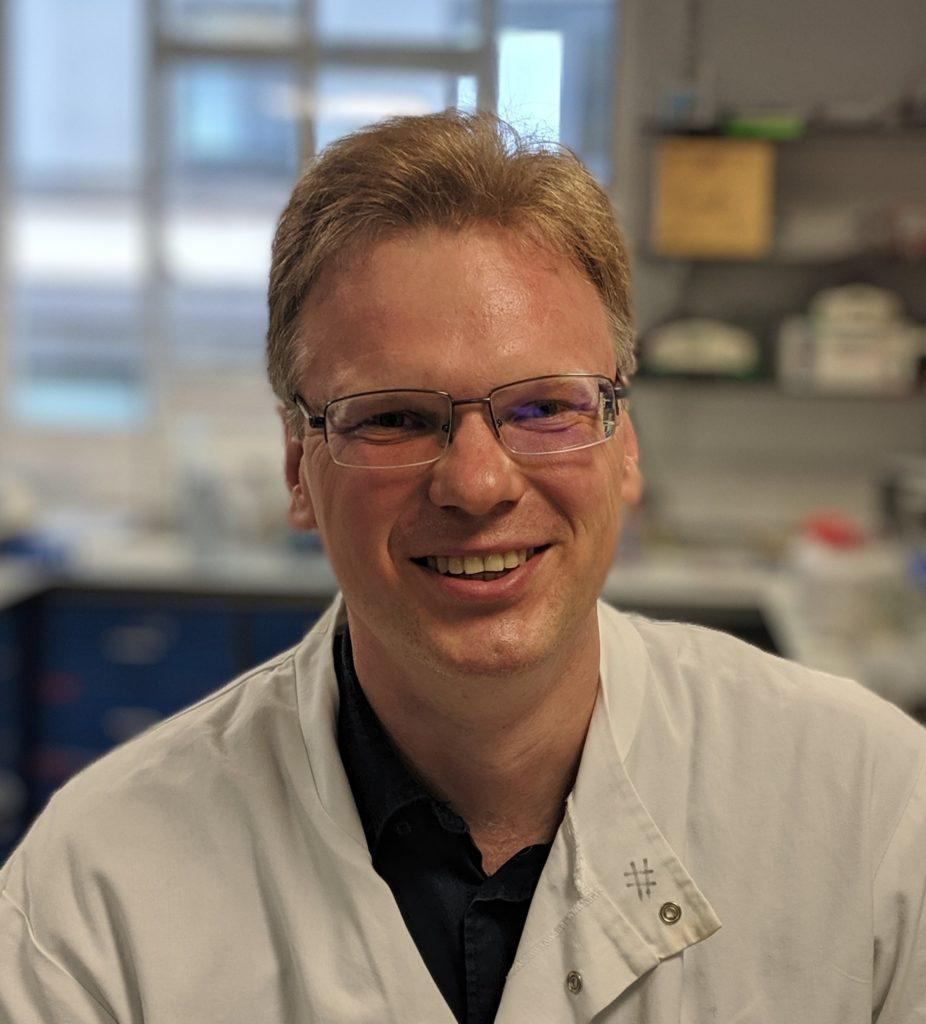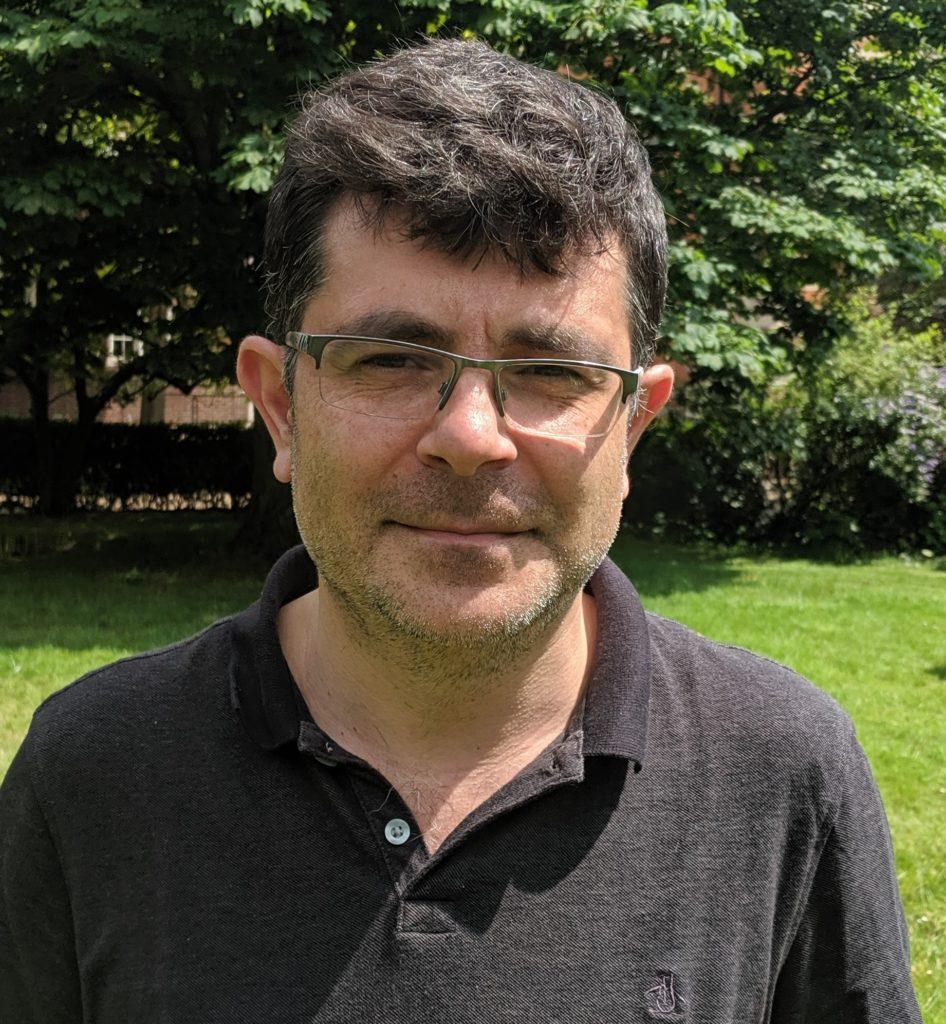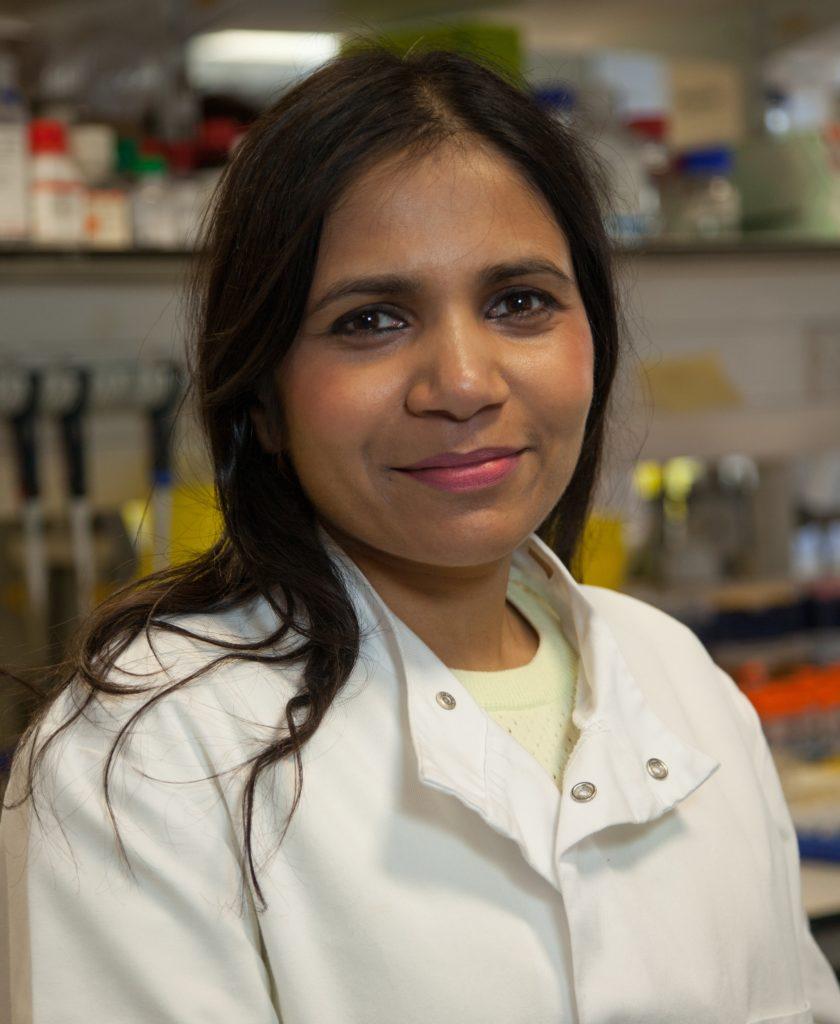How BCI researchers are tackling blood cancer with Blood Cancer UK

September is Blood Cancer Awareness Month. In the UK each year, over 40,000 people are diagnosed with blood cancer, of which there are over 100 types (the most common are types of leukaemia, lymphoma and myeloma). Blood cancers can develop when the normal blood cell production process within the bone marrow is interrupted, resulting in the generation of abnormal blood cells that cannot function correctly.
At the Barts Cancer Institute (BCI), Queen Mary University of London, blood cancer is a key area of research focus. Our Centre for Haemato-Oncology is dedicated to understanding the biology of leukaemias and lymphomas, and harnessing this knowledge to identify new treatment strategies. Research groups in our Centre for Cancer Genomics & Computational Biology focus on tracing the genetic changes that occur in blood cancer to map cancer evolution, and understanding the cell signalling pathways that contribute to the development of haematological malignancies.
One of the main supporters of our blood cancer research is Blood Cancer UK - a community dedicated to beating blood cancer by funding research and supporting those affected. Since its establishment in the 1960s, Blood Cancer UK has invested over £500 million in blood cancer research.
Kate Keightley, head of Support Services at Blood Cancer UK said:
“Each year in London around 800 people will lose their lives to blood cancer yet worryingly little is known about what signs and symptoms to look for. Blood Cancer Awareness Month is a time for us all to come together, to increase awareness of the disease so people are diagnosed early and given the best possible chance of survival.”
This Blood Cancer Awareness Month, find out about the Blood Cancer UK-funded research projects currently underway at the BCI, which span from looking at the specific genetic changes (mutations) that drive blood cancer development, to identifying new treatment strategies to improve the outcomes for patients.
Finding the most effective treatment options for patients

Professor Jude Fitzgibbon and his team are working to identify new ways to treat Non-Hodgkin’s lymphoma (NHL) by targeting mutations that can occur in a family of genes known as chromatin regulators. Chromatin regulator genes are typically responsible for coating DNA with ‘traffic lights’ that switch gene expression on or off. These signals or marks are constantly being erased, rewritten and read to ensure every gene’s expression is optimally controlled.
The team’s work centres on the enzymes EZH2 (a writer) and KDM6 (an eraser), which are responsible for adding and removing a mark called H3K27me3 on genes. EZH2 is frequently mutated in lymphoma, resulting in increased H3K27me3 deposition and lymphoma development. The drug tazemetostat is a specific inhibitor of EZH2 and has recently been licenced for the treatment of relapsed follicular lymphoma (a type of NHL). In this project, the team will be studying the patterns of H3K27me3 deposition and the genes that are switched on and off in response to targeting these chromatin regulators.
Dr Hannah Armes, postdoctoral researcher working on the project in Professor Fitzgibbon’s group, said:
“In this project, we will test whether KDM6 represents a novel therapeutic target in NHL. We also anticipate that by increasing our understanding of the interactions between the EZH2 writer and KDM6 eraser, we can better define patients who will benefit from treatment with tazemetostat and indeed whether mutations in chromatin regulators either work in unison, have separate functions or do a bit of both.”
Dr Andrejs Braun is leading a project to investigate how a protein called Lamin B1 regulates mutations in B cells (a type of white blood cell), which can lead to the development of leukaemia and lymphoma.
Dr Braun’s group recently discovered that Lamin B1 has a major role in controlling mutations in normal and cancerous B cells. Under normal circumstances, Lamin B1 acts as a mutational ‘on and off’ switch, which helps B cells to generate different antibodies during the immune response needed to fight infections. In leukaemia and lymphoma, Lamin B1 becomes dysregulated, leaving the mutational switch in the ‘on’ position, which ultimately results in cancer progression.
Dr Braun said:
“Our project aims to determine how exactly Lamin B1 regulates these mutations and how it influences the outcome of blood cancer. The information gained from our project could be particularly helpful in predicting how aggressive certain types of lymphoma will be. Furthermore, we hope our findings will help to pave the way for the development of a completely new class of drugs targeting the effects of Lamin B1 dysregulation in lymphoma.”
Professor Pedro Cutillas and his team are investigating the mechanisms of action of a particular group of drugs, known as FLT3 inhibitors, used to treat acute myeloid leukaemia (AML). In AML, mutations in a gene called FLT3 occur in 30% of cases and one mutation in particular, known as FLT3-ITD, is a common driver of cancer development that confers poor prognosis in patients with AML. FTL3 inhibitors can be used to target and kill blood cancer cells with FTL3 mutations.
Although identification and development of FLT3 inhibitors has improved treatment options for patients with AML, not all patients with FTL3 mutations respond well to these drugs. Therefore, there is a clinical need to identify biological measures that can predict sensitivity to FLT3 inhibitors with greater accuracy. Professor Cutillas and his team are currently working on proteomics (the study of proteins within cells) and phosphoproteomics (the study of how these proteins are modified) experiments to identify markers that better reflect AML biology and the signalling pathways within blood cancer cells that are modulated by FLT3 inhibitors.
Dr Maruan Hijazi Vega, postdoctoral researcher in Professor Cutillas’ group, said:
“We hope that our findings will highlight pathway signatures associated with FLT3 inhibitor drug responses, which may be able to be used to select patients for therapy with greater precision than currently possible. We may also be able to identify combination treatments to treat patients who are resistant to FLT3 inhibitors.”
Understanding and targeting the mechanisms that drive relapse in leukaemia
Dr Bela Wrench is investigating mechanisms by which a type of leukaemia - known as acute lymphoblastic leukaemia (ALL) - can return following treatment in adults. Current treatment strategies for ALL can show promising initial results, leading to complete remission; however, some cancer cells can be left behind after treatment, leaving patients at risk of disease recurrence. Unfortunately, ALL will return (or relapse) in over 50% of adults who reach remission.
The cancer cells left behind after treatment can enter a dormant state to protect themselves and to avoid elimination. Under the right conditions, the dormant cells can reactivate, initiating the return of the cancer. Dr Wrench and her team hope to uncover the mechanisms of tumour dormancy in ALL, in order to identify novel therapeutic strategies against disease relapse.
Finding curative therapies that target leukaemia at its core
Professor Kamil R Kranc is leading a project to identify new therapeutic strategies to eradicate cancer stem cells, which fuel leukaemia. Normal blood stem cells reside in the bone marrow and are responsible for life-long blood production; however, in blood cancers, such as AML, blood stem cells are damaged and turn into cancer stem cells. Cancer stem cells fuel the leukaemia bulk, which invades multiple organs, resulting in devastating leukaemic disease.
Current chemotherapies used to treat patients often only temporarily shrink the leukaemic bulk, and fail to eliminate cancer stem cells, which cause the disease to return in a more aggressive form. Since only 30-40% of AML patients survive for 5 years or more after diagnosis, it is of immense importance to design new therapies that efficiently target cancer stem cells and permanently eradicate them without damaging normal blood cells.
The team has recently found that that a group of enzymes called 2-oxoglutarate (2-OG)-dependent protein hydroxylases drive survival of cancer stem cells. In this project, Professor Kranc and his team hope to identify drugs that inhibit different members of this enzyme family and test them in diverse clinically-relevant leukaemia models. To drive this project most efficiently, Professor Kranc closely collaborates with Professor Sir Peter Ratcliffe (a Nobel laureate in 2019) and Professor Chris Schofield (Head of Organic Chemistry at Oxford), who are world authorities on these key enzymes. Together, this team hopes to translate their discoveries to the clinic to eliminate cancer stem cells in AML patients.
Category: General News





No comments yet